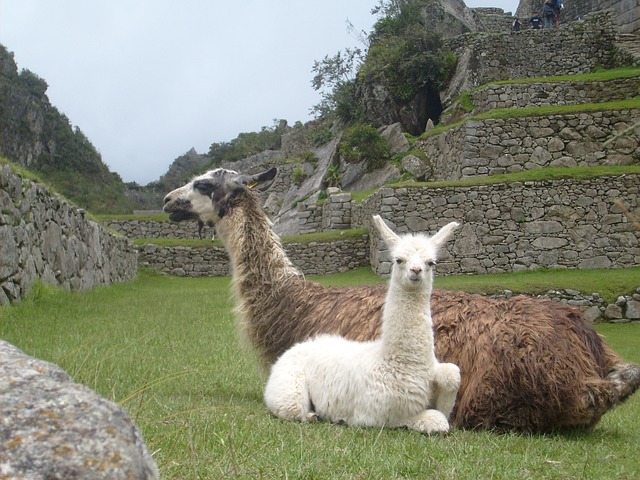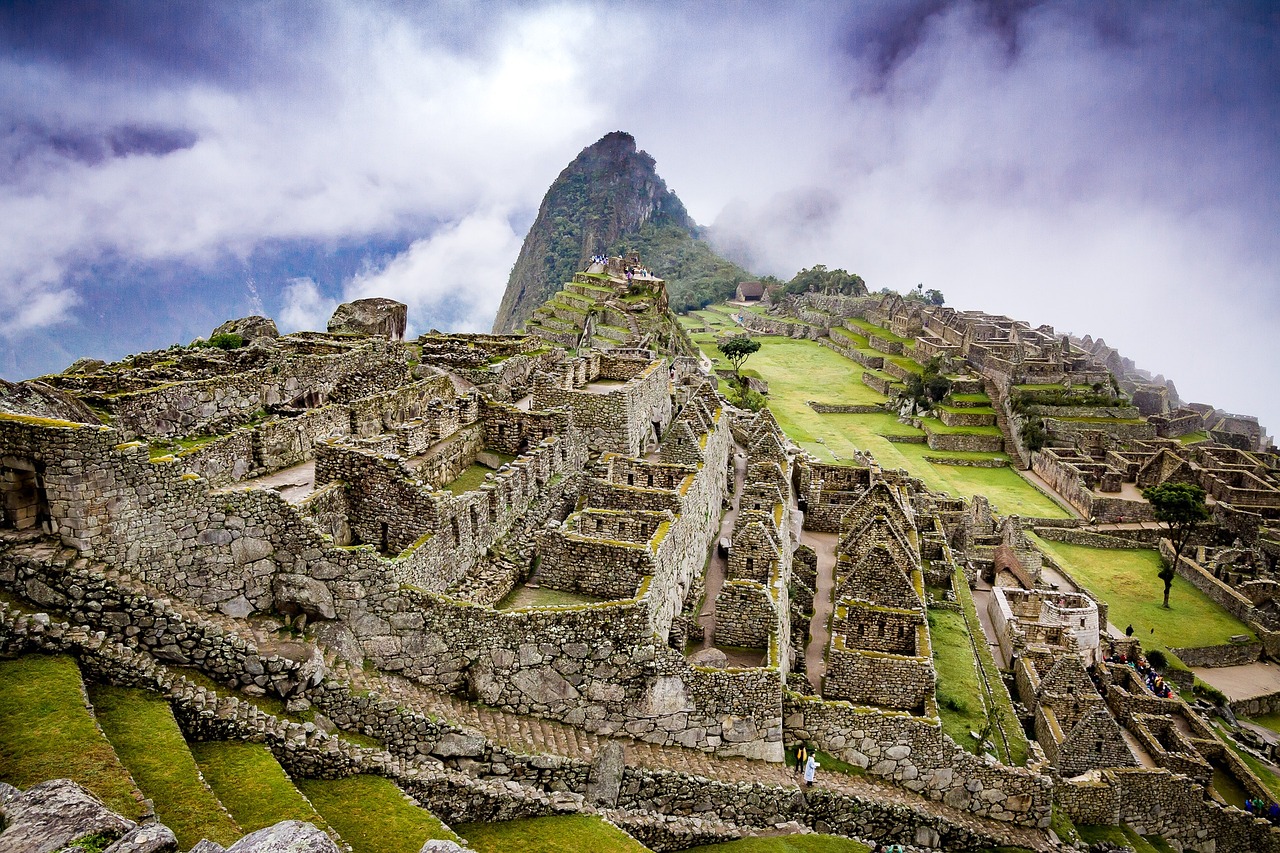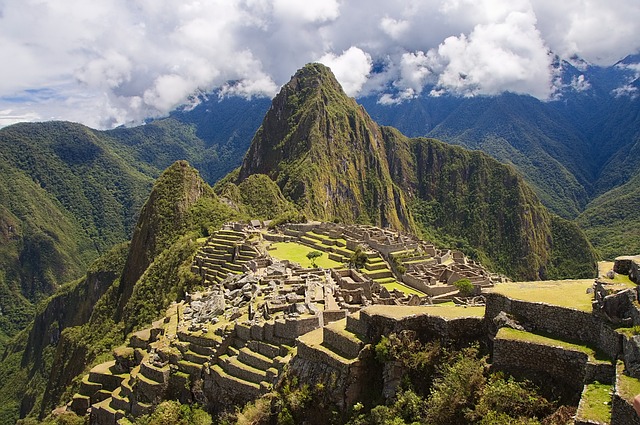Introduction to Machu Picchu
By any standards, though located in the Peruvian Andes, Machu Picchu bears the stamp of a great civilization, the Incas. Found by the American historian Hiram Bingham in 1911 this ancient city has bewitched the entire world. Perceived as the ‘City of the Incas’, that is a historic and architectural site which is a perfect example of Inca achievements. This site occupies a significant position and still has complex architecture; people including scholars and tourists are still fascinated by it.
It is not just the history of the world we are learning when we hear or read about Machu Picchu. Not only does it serve as a representation of Inca people’s way of living, it grants unique perception of the society that existed ages ago. This site is quite informative of the general life of the Inca people and their religious beliefs which are entwined with the natural world and the universe. Structures such as terraces, Temples and astronomical calendars provide an insight into the kind of society that the Inca people had developed.
This site was acknowledged across the whole world for its immensely high cultural significance and it is listed on the World Heritage List since 1983. They are tired of the State systematically demoralizing them while claiming that only its prestige in the eyes of the West can protect this house, a traditional historical monument for people of different ages. Further on, in 2007, it was awarded the status of New Seven Wonders of the World, and today Cho expended is truly considered a place which a traveler will have to visit and a historian will have to study.
This place has always been mysterious and stunningly beautiful and this is why people are still interested in getting there. Located in a region of beautiful mountains and other fascinating terrains, it has appeal to anyone who will venture to look into the ruins of this historic place. Apart from being perceived as a creation of Incan innovation, Machu Picchu remains as an engineering marvel of old times prompting visitors to wonder at the architectural marvel.
Historical Background
Machu Picchu is defined as “The Lost City of the Incas”, where one can observe the evidence of power, architecture and craftsmanship of the Inca civilization. This mysterious place was built in mid-fifteenth century by the Inca Emperor Pachakutik; it is situated at an altitude of 2,430 meters above the sea level in the region of the Andes Mountains, Peru. Machu Picchu is best known as the Lost City of the Incas, and as with any important historical site, it is hard to decide its original purpose.
Through this article, one dominant hypothesis approaching the function of the site postulates that it was a royal estate that could have been used as a vacation destination for the emperor Pachakutik and royal Inca. This notion is well supported by presence of palatial like structures, stepped roofs and very well dressed stones suggesting that the space had been intended for the elite and dignitaries and perhaps the Inca nobility.
The theories that have been put forward have it that Machu Picchu could have been a religious shrine. The layout of the stone temples, the Insinuating sun dial and the location next to the Huayna Picchu mountain suggest that religious and ritual practices may possibly have formed the primary use of this city. These interpretations are not mutually exclusive the city might have served both purposes of secular and religious life interaction of the concepts of power and the divine in Inca culture.
Machu Picchu is believed to have been abandoned at some time around the span of the Conquest in the 16th century. Culture The historical data suggest that various factors such as disease, war and the collapse of the administrative system could have been the reasons for the abandonment of the site. The area stayed completely obscure, blanketed with jungle for centuries before an American historian and explorer Hiram Bingham introduced the sight to the world in 1911. The credit for reviving the world’s attention to Machu Picchu would go to Bingham even though he overshadowed it earlier, his work began a new age of archaeological discovery, and, especially, tourism that would aid in protecting this part of history.
Architecture and Design
Machu Picchu or the city of the Incas is an epitome of the great architectural as well as town planning. Indeed it is believed that this great site was designed and developed by the Incas who where a very smart people. Perhaps the most noticeable architectural element is the use of fineness of fit walls or dry stone walls: as stones are precisely cut, they are built without use of shaped masonry or cement and thus they can resist both aging and earthquakes. It is evident that efficiency of this methods can be viewed in the fact that Machu Picchu remains stable even now.
The last but not the least, the terraced fields can also be shown as one more striking feature of the site’s layout. These agricultural terraces also aimed at conserving the lands used for agriculture as well as ensured good drainage of water as well as conservation of the soil. These careful designs allowed for a population to be supported in a difficult region of high altitude terrains.
In Machu Picchu there are several buildings which are historical and architecturally important which include: For instance, the Insinuating stone or the Hitching Post of the Sun that various archeologists including Garcilaso de la Vega considered to have been used to mark astronomical events and even as a calendar. Likewise, the design of the Temple of the Sun, its boot-like shape and the orientation toward the June solstice sunrise proves the highly developed astronomical perception in the architecture of the Inca period.
Other noticeable construction is the Room of the Three Windows, from which one can get a good look at the sacred plaza. Such windows, aligned in an exquisite manner most probably performed both representational and pragmatic functions, which clearly revealed that the Incas felt the existence of a divine relationship with their environment.
The facets of engineering at the site of Machu Picchu can therefore be seen at the societal level cutting across the architectural works at the site. Complex systems of distributing and bringing water in a standardized way can also be seen as an example of hydraulic engineering such as aqueducts and fountains. Further, the geographical advantages of the city along with planned distribution of zones such as, religious, built-up, and agricultural all show an understanding of complete and sustainable urban planning.
Altogether, these architectural and design features characterize the Incan culture’s tenacity and creativity, something that makes Machu Picchu a priceless historical and cultural asset besides being provocative of contemporary theories and practices in urban and architecture development.
Cultural and Religious Significance
A visit to the famous and mysterious Lost City of the Incas – Machu Picchu – is not only an admiration of the masterpieces of architecture but also the sponsorship of the intensive Inca culture and rituals life. Appealing to cultural and religious essence of an ancient city, one enjoys observing the remnants of the Inca cosmos-graphic beliefs and practices. An aspect of spiritual beliefs which was very evident in the Incas was the kinship between the Incas and nature which was well reflected in the structures of the Machu Picchu.
Some of the gods that the Incas revered include Inti, deity associated with the sun and Pachamama the goddess of earth respectively. These gods formed part and parcel of their world perspective and their daily-life aspects such as farming, social organization among others. That is why one can consider Machu Picchu as the temple where the celestial phenomena were associated with the religious acts. For instance, the Intihuatana stone, which is ritual stone connected with astronomy played a crucial role of a component in the religious activities of the Inca civilization. Some of them postulate that it was used for predicting solstices, equinoxes so as to synchronize the agricultural work with that of cosmos.
This brings our focus on one of the most intriguing alignments which is that of the Temple of the Sun. In winter solstice light falls on a rock inside a house through a window and the position shows the excellent architectural pattern of the city and its religious significance.
It was not only the great engineering achievements that were represented by those alliances; they represented the cosmological view and the perception of the world belonging to the Incas. So was Machu Picchu not just a palace, or summer resort as it has been so often described; it was fundamentally a religious center, with places of worship where the occupational force required the intervention of the gods and the performance of the rituals to solicit their blessings.
Exploring the culture and religious values of the Inca in relation to the site is very essential to taste understand their way of life. It demonstrates their expertise in astronomy, their spiritual Ness and how they were able to blend religious practices into their day-to-day existence. That is why Machu Picchu is recognized as an extraordinary object of Cultural heritage symbolizing the outstanding experience of the Inca civilization and their approach to the world.
Natural Setting and Biodiversity
Machu Picchu is located in the top of the Andean Mountain range and is an architectural masterpiece surrounded by scenic backdrop. As already discovered in the physical description of the site, the area lies at appraise 2,430 meters (7,970 feet) above sea level and hence encompasses expansive views of valleys and peaks that are fleeced with snow. It presents a dramatic scene which changes with the presence of light and darkness constantly; thus, creating a magical environment for the archaeologically significant site.
The reason that only Machu Picchu is located within this type of climate is that it resides in a cloud forest, which is a subtropical climate where the canopy of trees is constantly shrouded in clouds. Such environment gives support to a variety of plants and animals that make up the biotic community. The plants also consist of a variety of orchids which has more than 300 species recorded, accompanied by bromeliad and ferns to complete the vivid green vegetation. Large trees, for example the Polleis offer support to the many plants that inhabit the under-story layer.
The wildlife of Machu Picchu reflects the arborist picture of the place too; the animals are more characteristic to the cloud forest biome. The tourists may be able to sight the Andean bear, which is also called the spectacled bear that is native to the area. Bird watchers, they have the opportunity to observe the Andean cock of the rock and the other types of humming bird tanagers and the white winged guan which is an endangered species. Amphibians and insects are also represented here, these are very important links in the food chain network.
Mitigation of this biodiverse environment is of most importance especially when accommodating the increasing number of tourists wishing to explore the area, and other conservation measures. Computerization of tourism has been checked and ensure that there are limited visitors who can go at a given time and specific trails are availed to reduce the impact the human being would have on the sensitive ecological system. Relay awareness and people’s recycle participation standards form a key consideration since schools and communities are key focal points regarding conservation.
Balancing between tourism development and protection of the environment in the framework of preserving the unique beauty of Machu Picchu and the flora and fauna of this area is also an important step towards the future that everyone wants to see.
Tourism and Visitor Experience
Machu Picchu, the famous ‘Lost City of the Incas’ is still a tourist attraction of choice for a number of travelers. This mysterious site can be reached mainly by rail from Cusco to Aguas Calientes then by car to the entrance of the site. For the more daring, there are several choices of treks with the most popular one being the Inca Trail which is a four day trek through the mountains of the Andes.
As for the Inca Trail, it requires proper planning most of the time the permits are sold out for many months in advance. Others are Salcantay Trek, which is as good as the classic Inca trail though offering a different view of Peruvian landscape, and Lares Trek also offers view of the Peruvian scenery. Upon getting there, there are marked trails throughout the site, whereby visitors cover all sections of temple, terraces and Sun Gate view point.
I recommend visiting lazing be done in the dry season, the period from May to September because this weather is most favorable for trails. On the other hand, it is wet seasons from October to April, and while you can avoid big crowds during these months, you have poor weather that may hinder your trekking. This makes the recommendation to start the journey early to avoid cowboy times and congestion of the roads hence has a positive effect on the journey.
For a deeper experience and more historical and cultural themes of the site there are offered many types of the group excursions. Qualified tour assistants enhance visitors’ understanding of the cultural practices of the Incas, learn about their extraordinary constructions, and explore the site’s fascinating history. Generally, tours are provided in several languages to suit the various people that may be present in the group.
Preparation is essential since the altitude of the area is relatively high averaging about 7,970 feet or 2,430 meters above sea level. Prevention measures include acclimatization as well as other measures to avoid altitude sickness including adequate water intake as well as reduction of physical activities during the first hours at the high altitude. External conditions may also be raising questions, therefore layers of clothing, sun block and good rain wear are necessary for the visitor to be comfortable.
Conservation Efforts and Challenges
Machu Picchu also known as the Lost city of the Incas is one of the most significant cultural historical centers. Measures and actions to safeguard this accomplishments are diverse; stringent approaches as well as joint programs by several organizations including UNESCO and Peruvian authority. Listing as World Heritage Site emphasizes its uniqueness and significance for the world and highlights the need to protect Machu Picchu from the negative impact of climate change, tourism and other forms of anthropogenic pressure, as well as possible natural disasters.
Conservation measures are centered on reducing the effects of tourism irrespective of the fact that the number of tourists is increasing by a thousand per day with more than one million a year now. Tourists present a problem to the structure of these ruins, as well as to the environment. To accommodate this, the Peruvian government has put in place regulations that regulate the number of visitors that can be allowed in per day and came up with shift systems through tickets. This approach seeks to spread the traffic throughout the day in order not to put pressure on some of the structures that may be weak at the site.
Another antecedent of conservation is the environmental stewardship which has proven significant in the efforts towards conservation. These cloud forests are a rather unstable ecosystem; landslides and erosion dangers exist and can destabilize the site. A part of these protective or mitigation measures include the continued planting of native vegetation for ground stabilization and adopting high end monitoring systems to track ground movement. Other such collaborations with foreign specialists and organizations alongside the local people reinforce these endeavors, to make sure that the inherent indigenous practices do not were displaced by recent approaches to conservation.
This has been the case however, there are still some hurdles encountered as outlined below. It still remains an uphill task to solve the issue, on how to open up the heritage site for visitors and at the same time maintaining the authenticity of the place. Auto-generated trails by over-enthusiastic hikers remain a threat to human life and the conservation of the landscape hence the need for constant policing. Further, another layer of consideration is the tension between the attempts at the preservation of history and the practical concerns of both local population for whose socio-economic welfare tourism serves as one of the major sources of income and the tourists themselves.
In closing, it is equally important to recognize that the management of Machu Picchu is not a one-time exercise since status requires constant attention and effort: this means that because of the numerous changes that affect and surround cultural world heritage sites, which are also dynamic spaces, new strategies, and concerted efforts from various actors are important. The cherished goal of countless people of the world is possible, after all, it means to preserve the wonder of this Incan architectural gem for the generations of descendants.

Conclusion and Future Prospects
Machu Picchu is one of the most important archaeological sites of America and an emblem of Inca creativity. This city lies deep in the Andes of Peru giving it a mysterious appeal which draws in millions of tourists every year. The terraces, temples, intricate construction done with stones are still and continues to stand a marvel for historians, archaeologists as well as travelers where they get a glimpse of an enshrouded, mysteriously magnificent period.
But being a permanent fixture on the map of the world’s tourist attractions Machu Picchu’s appeal cannot be questioned. But, thanks to the tourism activities, the original look of this area has been threatened with potential erosion. Thus, environmental strategies are important in order not to disrupt the balance between the desire of tourists to visit this relic and the preservation of Machu Picchu. Measures like controlling the number of visitors, the access to the site with environmentally friendly modes of transport and educational interventions will seek to ensure that this archaeological marvel endure.
As for the future, there are efforts being made to establish new conservatism methods that will help preserve Machu Picchu from natural factors, as well as from visitors’ impact. Latest techniques in structural reclamations, climate effect measurements, and restoration initiatives remain in the process of evolution. There is a great cooperation between local administrators, global conservation organizations, and indigenous people on the site protection.
As such, it is our responsibility including the governments, tourism stakeholders and people across the world to embrace and conserve Machu Picchu for the benefits of all societies across the globe and as an important monument of the humanity. By working together and embracing the principles of sustainable tourism, we will be able to keep Machu Picchu as it is today for the generations to come and pull more people across the world to witness one of the world’s brightest wonders today.




